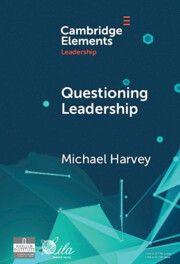Refine search
Actions for selected content:
40 results
1 - Introduction
-
-
- Book:
- Human Rights in the Digital Domain
- Published online:
- 24 October 2025
- Print publication:
- 13 November 2025, pp 1-8
-
- Chapter
-
- You have access
- Open access
- HTML
- Export citation
13 - Frequently Asked Questions and Some Answers
- from Part IV - Epilogue
-
- Book:
- Ethnography in International Business
- Published online:
- 21 October 2025
- Print publication:
- 09 October 2025, pp 242-251
-
- Chapter
- Export citation
7 - Syntax
-
- Book:
- The Balkan Languages
- Published online:
- 31 May 2025
- Print publication:
- 26 June 2025, pp 781-1008
-
- Chapter
-
- You have access
- Open access
- HTML
- Export citation
5 - Describing the problem
- from Part 3 - Reasoning
-
- Book:
- Introduction to Epidemiology for the Health Sciences
- Published online:
- 28 May 2025
- Print publication:
- 24 April 2025, pp 121-158
-
- Chapter
- Export citation
12 - Bringing it together
- from Part 6 - Decision-making
-
- Book:
- Introduction to Epidemiology for the Health Sciences
- Published online:
- 28 May 2025
- Print publication:
- 24 April 2025, pp 348-379
-
- Chapter
- Export citation
Chapter 9 - Exploring Narratives in Learner Language
-
- Book:
- Learner Language, Discourse and Interaction
- Published online:
- 09 January 2025
- Print publication:
- 23 January 2025, pp 222-254
-
- Chapter
-
- You have access
- Open access
- HTML
- Export citation
15 - Social Quizzes for People Living with Dementia
- from Part 5 - Communicative Challenges in Everyday Social Life
-
-
- Book:
- Dementia and Language
- Published online:
- 21 November 2024
- Print publication:
- 28 November 2024, pp 336-355
-
- Chapter
- Export citation
13 - Using Digital Communication Support in Interaction Involving People with Dementia
- from Part 5 - Communicative Challenges in Everyday Social Life
-
-
- Book:
- Dementia and Language
- Published online:
- 21 November 2024
- Print publication:
- 28 November 2024, pp 292-315
-
- Chapter
- Export citation
13 - Doing more with language
- from Part III - Using language
-
- Book:
- First Language Acquisition
- Published online:
- 01 November 2024
- Print publication:
- 20 June 2024, pp 373-410
-
- Chapter
- Export citation
9 - Adding complexity within clauses
- from Part II - Constructions and meanings
-
- Book:
- First Language Acquisition
- Published online:
- 01 November 2024
- Print publication:
- 20 June 2024, pp 246-280
-
- Chapter
- Export citation

Questioning Leadership
-
- Published online:
- 17 June 2024
- Print publication:
- 20 June 2024
-
- Element
- Export citation
Social Inquisitiveness: A Normative Account of the Social Epistemic Virtue of Good Questioning
-
- Article
-
- You have access
- Open access
- HTML
- Export citation
Chapter 4 - Creating Questions
-
- Book:
- Pragmatism and Methodology
- Published online:
- 04 January 2024
- Print publication:
- 25 January 2024, pp 74-96
-
- Chapter
-
- You have access
- Open access
- HTML
- Export citation
“The Same Causes Occasioning the Same Effects”: The “Jewish Question”, the “Chinese Question” and the Global Precedents of Exclusion in Late Nineteenth Century Central Europe
-
- Journal:
- Journal of Global History / Volume 19 / Issue 2 / July 2024
- Published online by Cambridge University Press:
- 22 January 2024, pp. 281-300
-
- Article
- Export citation
Chapter 10 - Latin edepol ‘by Pollux!’
- from Part II - Drama
-
-
- Book:
- Early Latin
- Published online:
- 27 July 2023
- Print publication:
- 17 August 2023, pp 206-220
-
- Chapter
- Export citation
Inquiring Attitudes and Erotetic Logic: Norms of Restriction and Expansion
-
- Journal:
- Journal of the American Philosophical Association / Volume 10 / Issue 3 / September 2024
- Published online by Cambridge University Press:
- 19 June 2023, pp. 444-466
-
- Article
- Export citation
Unidad 1 - ¿Cómo te llamas?
- from Part Two - The Units
-
- Book:
- Camino al español
- Published online:
- 22 February 2023
- Print publication:
- 26 January 2023, pp 25-43
-
- Chapter
- Export citation
Unidad 1 - ¿Cómo te llamas?
- from Part Two - The Units
-
- Book:
- Camino al español
- Published online:
- 22 February 2023
- Print publication:
- 26 January 2023, pp 25-43
-
- Chapter
- Export citation
2 - Voir Dire: Introducing Jurors to the Judge, Their Fellow Jurors, and Their Role
-
- Book:
- The Power of the Jury
- Published online:
- 25 August 2022
- Print publication:
- 15 September 2022, pp 41-75
-
- Chapter
- Export citation
Chapter 20 - Wh-Indefinites
- from Part IV - Semantics and Pragmatics
-
-
- Book:
- The Cambridge Handbook of Korean Linguistics
- Published online:
- 30 September 2022
- Print publication:
- 25 August 2022, pp 581-606
-
- Chapter
- Export citation
